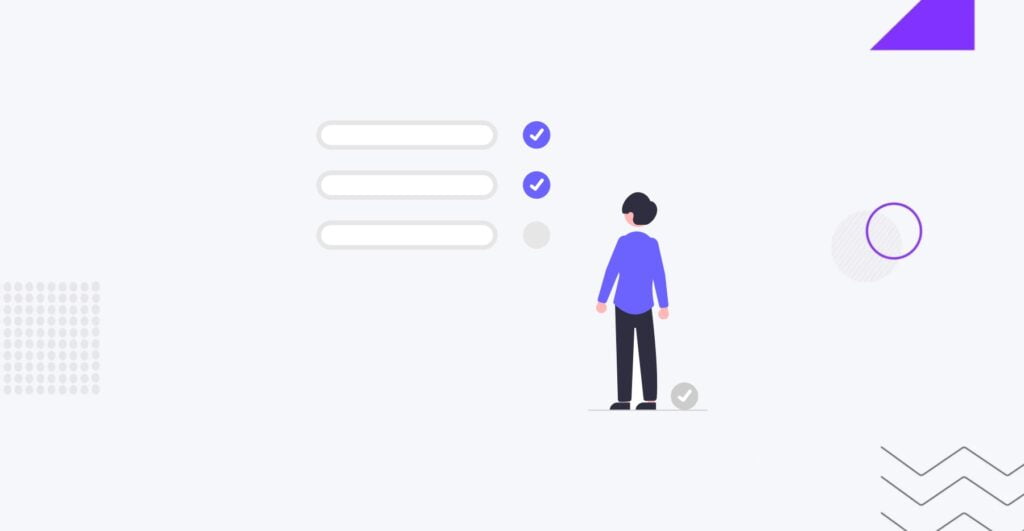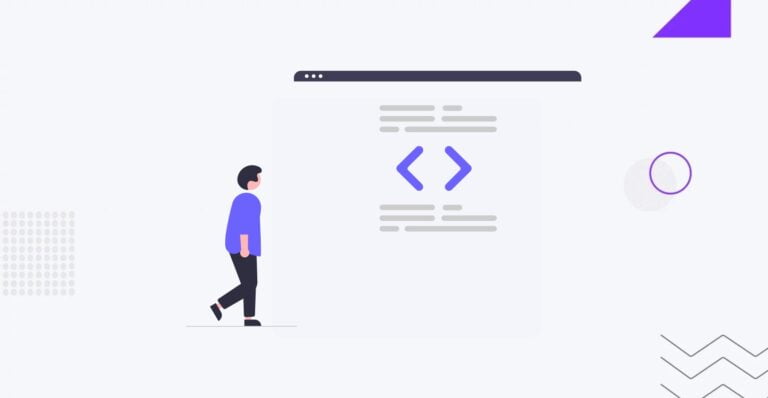What to Include in Your Website Design RFP
Table of Contents

Are you in the market for a new website design? Finding the perfect fit for your business can be challenging, but a well-crafted Request for Proposal (RFP) can make all the difference. In this article, we will guide you through the essential elements to include in your website design RFP to ensure that you attract the right web designWeb DesignCreating and organizing the visual layout, user interface, and overall aesthetics of a website.
More About Web Design agencies and find the partner that best aligns with your goals and objectives outlined in the RFP templateTemplateA website template is a pre-designed webpage that is a starting point for creating a website.
More About Template.
RFP Meaning
A Request for Proposal (RFP) is a document that outlines your requirements and invites potential vendors or agencies to submit a proposal to meet those requirements. It communicates your needs and expectations to potential web design partners, allowing them to understand the project’s scope and provide a tailored solution.
Including a clear and detailed RFP in your website design procurement process is crucial for several reasons. First, it helps you define your project goals and objectives, ensuring you have a clear vision of what you want to achieve with your new website. Second, it allows you to evaluate and compare different proposals from various web design agencies, ensuring that you select the right partner for your business. Establishing clear expectations, timelines, and deliverables sets the foundation for a successful collaboration.
At IT Monks Agency, we highly value well-crafted Website Design Requests for Proposals (RFPs). A comprehensive RFP defines project goals and allows us to align our expertise with your vision. It is a crucial tool for evaluating proposals, ensuring a seamless partnership. Send us your RFP and let IT Monks turn your vision into a compelling online reality.
Excited to craft an exceptional new website?
Why is an RFP essential for website design?
When it comes to website design, you must comprehensively understand what you want to achieve. An RFP is a tool to communicate your vision, goals, and expectations to potential web design agencies. By including specific details in your RFP, you can ensure that the agencies you approach have the expertise and experience to meet your requirements.
Additionally, an RFP allows you to compare proposals from different agencies objectively. By outlining your evaluation criteria in the RFP, you can assess each proposal based on predefined factors such as cost, timeline, experience, and portfolio. This ensures you make an informed decision and select a web design agency that aligns with your business’s needs and objectives.
Key Elements of RFP for Website Design
Before you start writing your RFP, it’s crucial to have a clear understanding of your website design goals and objectives. What do you want to achieve with your new website? Are you looking to improve user experience, increase conversions, or enhance your brand image? Clearly defining your goals will help potential web design agencies understand the project’s purpose and propose a solution that meets your needs.
When outlining your goals and objectives, be as specific as possible. For example, instead of saying, “We want a modern website,” provide details such as the desired color scheme, layout, and functionality. This will ensure that the agencies you approach clearly understand your expectations and can provide a tailored proposal.
A detailed Website Design Request for Proposal (RFP) is vital at IT Monks Agency. An effective RFP aligns our expertise with your vision, facilitating informed decision-making in selecting the right web design partner.
We’ve created a free RFP template to help you create a professional and informative web design RFP. Download and use it to outline your professional goals and objectives and find your ideal web design partner.
Download Now: Free Web Design Checklist
If you are vetting web design agencies and need a checklist on:
- what to include in your RFP
- what questions to ask
- what points to emphasize
leave your email, and we’ll instantly send you the template.
Outlining your website design requirements and specifications
Once you have defined your goals and objectives, it’s time to outline your website design requirements and specifications. This includes elements such as the number of pages, desired features and functionalities, content management system (CMS) preferences, and any other requirements unique to your business.
It’s important to balance being detailed and flexible when outlining your requirements. While you want to provide enough information for agencies to understand your needs, you also want to leave room for their expertise and creativity. Consider including examples of websites you like or competitors that you find inspiring. This will give agencies a better understand of your aesthetic preferences and help them propose a design that aligns with your brand.
Budget considerations for website design
Budget is an important factor when creating an RFP for website design. While it’s natural to want the best possible design within your budget, it’s essential to have a realistic understanding of what you can afford. Including a budget range in your RFP will help potential web design agencies assess whether they can work within your financial constraints.
When setting a budget, consider the size and complexity of your website and any additional services you may require, such as content creation or search engine optimization (SEOSEOSearch Engine Optimization involves optimizing various website elements to make it more attractive to search engines like Google, Bing, and Yahoo.
More About SEO). Remember that investing in a high-quality website design can yield long-term benefits for your business, so allocating a reasonable budget is worthwhile to ensure a successful outcome.
Timeline and project management expectations
Clearly defining the timeline and project management expectations is essential to ensure a smooth website design process. Include the desired project start and end dates and any intermediate milestones or deliverables you expect. This will help potential web design agencies assess their availability and commitment to meet your timeline requirements.
In addition to the timeline, outline your project management expectations. Do you expect regular progress updates? Are there specific communication channels you prefer to use? Communicating your project management expectations will establish effective collaboration and ensure that both parties are aligned on the workflow and communication protocols.
When to Create a Website RFP?
Creating a web design RFP is recommended when you need a new website or redesign, but you need a preferred vendor in mind. Even if you have a preferred vendor, an RFP can help you explore all options and understand the market cost for website developmentWebsite DevelopmentCreating and constructing a website from scratch.
More About Website Development.
Why Create a Website RFP?
- To attract established and reputable web design agencies.
- To gather detailed background information for agency comparison.
- To assess the feasibility of your website project within your current scope and budget.
When to Skip the RFP Process?
Skipping the RFP process might be appropriate in the following scenarios:
- If you have a limited budget that may not attract serious interest from established web design agencies.
- If you have internal issues to address before starting the vendor selection process, such as lack of staff for providing feedback and content, or no dedicated project manager.
- If your legacy systems cannot properly integrate with a new website.
- If you have a very limited timeframe of less than 3 months.
Looking for expert assistance with your web design project?
How to Format Your RFP Template
Here is a suggested format for structuring your RFP. It can serve as a guide to present your website needs to vendors. While your document doesn’t have to follow this exact format, we’ll cover important information that should be included in any website request for a proposal.
Website Redesign RFP Template
Download a free RFP template and guide for formatting your website Request for Proposal (RFP).
Leave your email, and we’ll instantly deliver the template to your email inbox.
1. Introduction/Company Background
- Brief description of your company
- Purpose of the website redesign
- Current website URL: [Your Current Website URL]
- Overview of the project, including goals and expected outcomes
Example:
Company ABC is seeking a vendor partner to redesign and refresh our current website at [Current Website URL]. Our primary goals are to strengthen our online presence, build brand awareness, and reflect our culture and values.
2. Budget Range
- Clearly state your budget or expected price range
- Mention any additional components (e.g., social media, digital marketing) and their budget
Example:
We are budgeting $30,000 – $60,000 for this website, with a potential additional $5,000 – $10,000 for a social media component.3. Timeline & Important Deadlines
- RFP Release Date
- Response Deadline
- Vendor Selection
- Project Kickoff
- Desired Launch Goal Date
Example:
RFP Release Date: [Date] Response Deadline: [Date] Vendor Selection: [Date] Project Kickoff: [Date] Desired Launch Goal Date: [Realistic Date]
4. Identify Challenges
- Clearly define the issues the new website should address.
Example:
“Improved navigation – Vendor should simplify what’s up on our website and create a very attractive, easy-to-navigate website.”
“Calls To Actions are not converting enough leads.”5. Lay Out Goals
- Clearly state the goals for the project.
Example:
“Our top priority is generating sales-ready leads. Our secondary goals are educating prospective buyers on our services.”
“Strengthen online presence, build brand awareness, and provide an overview of our services.”6. Audience
- Define your target audience
- Describe the steps leading to a sale or conversionConversionA process of turning a website visitor, social media follower, or any other potential customer into an actual paying customer.
More About Conversion
Examples:
Decision Makers: Most interested in Pages and Content On - Plans, About, Blog.
Job Seekers: Most Interested in Pages and Content On - About, Solutions, Careers.7. Desired Website/Requirements
- Current web presence
- Ideal website solution and feature wishlist
- Specific requirements (e.g., CRMCRMCustomer Relationship Management is a set of strategies, practices, and technologies that enable businesses to manage and analyze customer interactions and data throughout the customer lifecycle.
More About CRM integration, analytics)
Examples:
“CRM Integration: Connect contact form submissions to Salesforce CRM system.”
“Website should contain a Resource Repository – documents library that users can access and download.”8. Website Examples
- List 5-10 websites you like and specific features you like about them
- List 3-5 competitor websites
Example:
Liked Websites: [URL1] – [Features], [URL2] – [Features], [URL3] – [Features].9. Team Roles and Collaboration
Detail team members involved in the project, preferred method of communication and workflow.
Example:
Our team includes the marketing, sales, IT, and customer service departments. Jill will be the project manager, Steve from marketing will create written content, Samantha will supply video and images, and Kurt from sales will offer input on lead generation.10. Submission Instructions
- Key information to be included in proposals
- Instructions on how to submit the response
Example:
Please provide the following: Name, address, email, phone, website; # of years in operation; Top clients and when they partnered; 4-6 client references; 3-5 top relevant projects with case study or website URL; # of individuals working on the project, their roles & responsibilities; Team size, bios, years of experience, awards/certifications; Any additional resources required for support; # of hours and general timeline from start to completion; Project management approach; General overview of website build process end-to-end.Remember to customize this RFP template according to your specific needs and details.
Where to Send Your Website Design RFP?
When it’s time to send your RFP for web design, you’ll need to determine which agencies to reach out to. Here’s a guide to help you with your search:
- Use Clutch. This is the best resource for agency reviews. Companies are evaluated based on their market presence, industry recognition, and ability to meet client expectations. Reviews on Clutch are detailed and presented in a case study format.
- Check Google. If an agency appears on the first page of Google (non-ad listing), it’s a good sign that they understand SEO. This is important if SEO is a major goal for your website. Consider whether the agency ranks well for popular search terms and if they follow SEO best practices.
Find vendors that impress you. They should be considered if you love the presentation of their agency website and the quality of their client portfolio. Also, check the footerFooterA section at the bottom of a webpage with contact details, copyright notices, and links to important pagesOne of the primary functions of a footer is to provide navigation.
More About Footer section of websites you like, as you may find an agency link there.
Eliminate agencies that don’t meet your requirements or seem like a poor fit for your project. Aim to have a solid group of contenders, but be mindful to leave yourself with only a few choices. Sending your RFP to at least three agencies is a good practice, but more than six may be excessive.
By following these steps, you’ll be well-prepared to write your website RFP and take the first important step towards creating a new website.
Conclusion
Creating a successful RFP for website design is crucial to finding the perfect fit for your business. By understanding your goals, outlining your requirements, considering your budget, defining your timeline, and evaluating potential agencies.
Do you have a website design RFP you’d like the IT Monks agency to review? We would be happy to discuss your website project!




